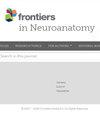利用体积电子显微镜明确识别不对称和对称突触
IF 2.3
4区 医学
Q1 ANATOMY & MORPHOLOGY
引用次数: 0
摘要
大脑中包含数千万个突触,其结构、分子和功能特征各不相同。不过,突触可分为两种主要形态类型:格雷Ⅰ型和Ⅱ型,分别对应科洛尼尔的不对称(AS)和对称(SS)突触。AS 和 SS 的突触后密度分别较厚和较薄。在大脑皮层中,由于大多数 AS 是兴奋性(谷氨酸能)突触,而 SS 是抑制性(GABA 能)突触,因此确定这两种主要皮层突触类型的分布、大小、密度和比例至关重要,这不仅有助于从连接性角度更好地理解突触组织,还能从功能角度更好地理解突触组织。然而,一些技术挑战使突触研究变得复杂。最近的体视电子显微镜研究利用亚铁氰化钾来提高细胞膜的电子密度。然而,随着亚铁氰化钾浓度的增加,突触后密度变薄,识别突触连接(尤其是 SS)变得更具挑战性。在此,我们介绍一种利用聚焦离子束铣削和扫描电子显微镜研究脑组织的方案。重点是明确识别 AS 和 SS 类型。为了验证使用该方案观察到的 SS 是否具有 GABA 能,对固定的小鼠脑组织切片进行了囊泡 GABA 转运体免疫细胞化学实验。这些材料用不同浓度的亚铁氰化钾处理,目的是确定其最佳浓度。我们证明,使用低浓度的亚铁氰化钾(0.1%)可改善膜的可视化,同时可明确识别突触是 AS 还是 SS。本文章由计算机程序翻译,如有差异,请以英文原文为准。
Unambiguous identification of asymmetric and symmetric synapses using volume electron microscopy
The brain contains thousands of millions of synapses, exhibiting diverse structural, molecular, and functional characteristics. However, synapses can be classified into two primary morphological types: Gray’s type I and type II, corresponding to Colonnier’s asymmetric (AS) and symmetric (SS) synapses, respectively. AS and SS have a thick and thin postsynaptic density, respectively. In the cerebral cortex, since most AS are excitatory (glutamatergic), and SS are inhibitory (GABAergic), determining the distribution, size, density, and proportion of the two major cortical types of synapses is critical, not only to better understand synaptic organization in terms of connectivity, but also from a functional perspective. However, several technical challenges complicate the study of synapses. Potassium ferrocyanide has been utilized in recent volume electron microscope studies to enhance electron density in cellular membranes. However, identifying synaptic junctions, especially SS, becomes more challenging as the postsynaptic densities become thinner with increasing concentrations of potassium ferrocyanide. Here we describe a protocol employing Focused Ion Beam Milling and Scanning Electron Microscopy for studying brain tissue. The focus is on the unequivocal identification of AS and SS types. To validate SS observed using this protocol as GABAergic, experiments with immunocytochemistry for the vesicular GABA transporter were conducted on fixed mouse brain tissue sections. This material was processed with different concentrations of potassium ferrocyanide, aiming to determine its optimal concentration. We demonstrate that using a low concentration of potassium ferrocyanide (0.1%) improves membrane visualization while allowing unequivocal identification of synapses as AS or SS.
求助全文
通过发布文献求助,成功后即可免费获取论文全文。
去求助
来源期刊

Frontiers in Neuroanatomy
ANATOMY & MORPHOLOGY-NEUROSCIENCES
CiteScore
4.70
自引率
3.40%
发文量
122
审稿时长
>12 weeks
期刊介绍:
Frontiers in Neuroanatomy publishes rigorously peer-reviewed research revealing important aspects of the anatomical organization of all nervous systems across all species. Specialty Chief Editor Javier DeFelipe at the Cajal Institute (CSIC) is supported by an outstanding Editorial Board of international experts. This multidisciplinary open-access journal is at the forefront of disseminating and communicating scientific knowledge and impactful discoveries to researchers, academics, clinicians and the public worldwide.
 求助内容:
求助内容: 应助结果提醒方式:
应助结果提醒方式:


